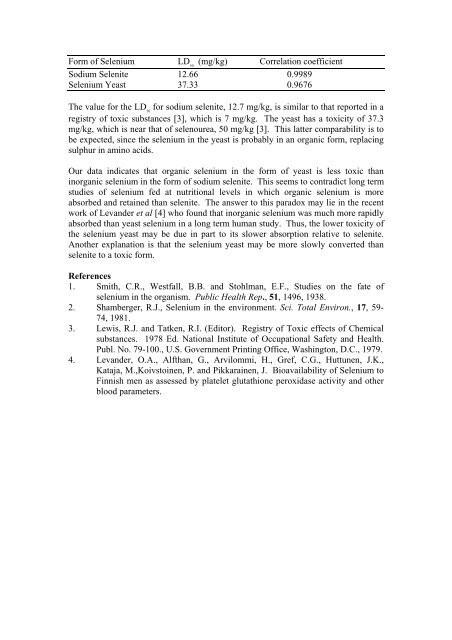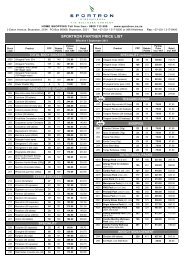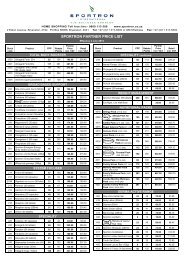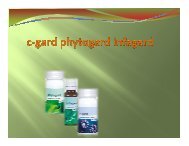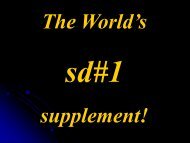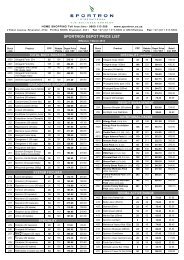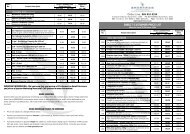Comparison of the Toxicity of Inorganic and Natural Selenium
Comparison of the Toxicity of Inorganic and Natural Selenium
Comparison of the Toxicity of Inorganic and Natural Selenium
You also want an ePaper? Increase the reach of your titles
YUMPU automatically turns print PDFs into web optimized ePapers that Google loves.
Form <strong>of</strong> <strong>Selenium</strong> LD 50<br />
(mg/kg) Correlation coefficient<br />
Sodium Selenite 12.66 0.9989<br />
<strong>Selenium</strong> Yeast 37.33 0.9676<br />
The value for <strong>the</strong> LD 50<br />
for sodium selenite, 12.7 mg/kg, is similar to that reported in a<br />
registry <strong>of</strong> toxic substances [3], which is 7 mg/kg. The yeast has a toxicity <strong>of</strong> 37.3<br />
mg/kg, which is near that <strong>of</strong> selenourea, 50 mg/kg [3]. This latter comparability is to<br />
be expected, since <strong>the</strong> selenium in <strong>the</strong> yeast is probably in an organic form, replacing<br />
sulphur in amino acids.<br />
Our data indicates that organic selenium in <strong>the</strong> form <strong>of</strong> yeast is less toxic than<br />
inorganic selenium in <strong>the</strong> form <strong>of</strong> sodium selenite. This seems to contradict long term<br />
studies <strong>of</strong> selenium fed at nutritional levels in which organic selenium is more<br />
absorbed <strong>and</strong> retained than selenite. The answer to this paradox may lie in <strong>the</strong> recent<br />
work <strong>of</strong> Lev<strong>and</strong>er et al [4] who found that inorganic selenium was much more rapidly<br />
absorbed than yeast selenium in a long term human study. Thus, <strong>the</strong> lower toxicity <strong>of</strong><br />
<strong>the</strong> selenium yeast may be due in part to its slower absorption relative to selenite.<br />
Ano<strong>the</strong>r explanation is that <strong>the</strong> selenium yeast may be more slowly converted than<br />
selenite to a toxic form.<br />
References<br />
1. Smith, C.R., Westfall, B.B. <strong>and</strong> Stohlman, E.F., Studies on <strong>the</strong> fate <strong>of</strong><br />
selenium in <strong>the</strong> organism. Public Health Rep., 51, 1496, 1938.<br />
2. Shamberger, R.J., <strong>Selenium</strong> in <strong>the</strong> environment. Sci. Total Environ., 17, 59-<br />
74, 1981.<br />
3. Lewis, R.J. <strong>and</strong> Tatken, R.I. (Editor). Registry <strong>of</strong> Toxic effects <strong>of</strong> Chemical<br />
substances. 1978 Ed. National Institute <strong>of</strong> Occupational Safety <strong>and</strong> Health.<br />
Publ. No. 79-100., U.S. Government Printing Office, Washington, D.C., 1979.<br />
4. Lev<strong>and</strong>er, O.A., Alfthan, G., Arvilommi, H., Gref, C.G., Huttunen, J.K.,<br />
Kataja, M.,Koivstoinen, P. <strong>and</strong> Pikkarainen, J. Bioavailability <strong>of</strong> <strong>Selenium</strong> to<br />
Finnish men as assessed by platelet glutathione peroxidase activity <strong>and</strong> o<strong>the</strong>r<br />
blood parameters.


